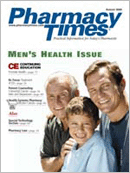Publication
Article
Pharmacy Times
Complementary Medicine and Diabetes: What's Fact, What's Fiction?
Author(s):
Diabetes is spreading throughoutthe United States, affecting~16 million people. Asobesity rates increase among bothadults and children, the numbers arelikely to grow in the coming decade.Many patients use complementarymedicines (CAM) or nutritional supplementsalong with their prescriptionmedications for diabetes. Surveys ofpatients in diabetes clinics indicatethat 17% to 66% of people with diabetesuse complementary products.1,2Within specific populations, use ishighest among Native Americans,Vietnamese, and Hispanics.3
Scientific literature regarding theefficacy of CAM is lacking. Most of theavailable data focus on the use of herbsor other dietary supplements, althoughtechniques such as biofeedback,relaxation, yoga, acupuncture,aromatherapy, and traditional Chinesemedicine have also been studied.Treatments derived from naturalsources have been used for centuries infolk and traditional medicine.
Positive results of small studies usingCAM therapies have been reported inthe literature. Substances that havebeen studied (and their reportedeffects) include3:
- Fenugreek: decreased fasting bloodglucose (FBG) and post-prandialblood glucose (PPG)
- Ginseng: decreased PPG and HgA1C
- Cinnamon: decreased serum glucose,total cholesterol, triglycerides,and LDL cholesterol
- Coccinia indica: decreased FBG,PPG
- Aloe vera juice: decreased FBG
- Carnitine: increased glucose uptakeand insulin sensitivity
- Vanadium: decreased FBG, HgA1C,hepatic glucose production, andincreased insulin sensitivity
- Gymnema sylvestre: decreased FBG,HgA1C, urine glucose
Negative results relative to glucosecontrol have been reported for garlic,branched chain amino acids, Bauhiniaforficata, and Myrcia uniflora. Conflictingresults have been reported instudies using chromium, magnesium,and vitamin E.3
The concurrent use of these preparationswith conventional medicationsraises several issues which should beaddressed by health care professionals.First, ~40 % of patients do not tell theirproviders they are taking these products,which makes it impossible to monitorfor drug interactions or side effects.4Various reasons for not revealing theuse of these products range from "noone asked" to the belief that supplementsare not medications, and thereforedo not need to be reported as such.
This problem is compounded by thefact that information regarding interactionsand side effects for many ofthese products is unavailable becausethey have not been well studied. Somecommonly used herbal supplements,such as St. John's wort and ginseng,have well-described drug interactions,but the majority of supplements havelittle or no data. Patients may be takingCAM for disease states other than diabetes,which further complicates theobtaining of correct information andevaluating potential problems. Despitethe fact that CAM use is widespread,many patients may feel uncomfortablediscussing its use. It is important to usenonjudgmental strategies when askingabout CAM use, as patients will bemore likely to reveal useful informationin discussions when they feel theyare not being judged.
There are more than 1500 herbalproducts on the market.5 It is importantfor CAM users to know that productquality and ingredients vary greatly.Products may contain contaminantsor no active ingredients. The FDA doesnot regulate these products, and thereis no required standardization of theactive components.
In response to increased use of alternativemedicines, the American DiabetesAssociation issued an update ofits position statement on this topic in2004.6 According to this publication,health care providers need to recognizethat use of "unproven therapies" ispervasive, and should ask theirpatients about the use of alternativemedicines. Health care providersshould also be able to evaluate theeffectiveness of therapies, be aware ofpotential harm to patients, and acknowledgecircumstances in whichnew or innovative therapeutic measuresmight be provided to patients (eg,clinical trials).
Pharmacists are in a unique positionto help their patients with diabetesmake informed decisions about CAMuse. The body of knowledge relating toCAM changes constantly, so stayingabreast of the latest findings is challenging.Many references, both printand on-line, are available to help caregiversprovide reliable information totheir patients.
Dr. Garrett is a clinical pharmacistpractitioner at Cornerstone Health Carein High Point, NC.
For a list of references, send astamped, self-addressed envelope to:References Department, Attn. A. Stahl,Pharmacy Times, 241 Forsgate Drive,Jamesburg, NJ 08831; or send an e-mailrequest to: [email protected].

Newsletter
Stay informed on drug updates, treatment guidelines, and pharmacy practice trends—subscribe to Pharmacy Times for weekly clinical insights.






